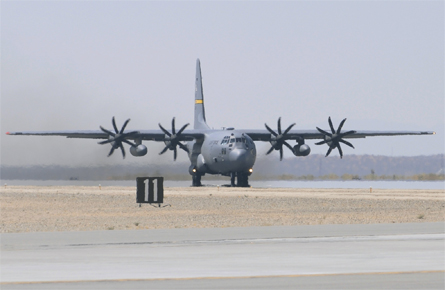The US Air Force is nearing the end of a flight test programme to measure the performance of Hamilton Sundstrand eight-blade NP2000 composite propellers for the Lockheed Martin C-130.
Since May, engineers with the 418th Flight Test Squadron have been testing a C-130H3 Hercules with the propellers at Edwards AFB, California, most recently completing minimum control airspeed tests.
The NP2000 propellers replace the legacy C-130's four-blade propellers, increasing thrust at take-off and in the low-speed regime while also decreasing noise and vibration. Newer C-130Js already use a six-blade R391 composite propeller built by Dowty Aerospace.
 |
|---|
© John Perry/US Air Force |
The air force in part would like to use such an upgrade for its LC-130 aircraft flying missions to Antarctica, where currently jet-assisted take-off (JATO) bottles are used to decrease take-off distance. Depending on the final performance, the NP2000 could either reduce the number of JATO rockets needed, or eliminate the thrust augmentation system altogether.
After maximum combat-load take offs, three-engine departures and other tests, the USAF will reinstall the cargo aircraft's four-blade propellers to directly compare performance characteristics, say officials. Testing is expected to be finished in January, after which the service will evaluate whether to upgrade a subset of its legacy C-130s with the propeller.
The enhancement is similar to what commercial developer Snow Aviation International has been offering for several years for the C-130E and H models. Snow says the NP2000 propellers reduce the C-130's take-off run by more than 20%.
Source: Flight International























